This website uses cookies so that we can provide you with the best user experience possible. Cookie information is stored in your browser and performs functions such as recognising you when you return to our website and helping our team to understand which sections of the website you find most interesting and useful.
The 10 finest rosés of 2021
Being pink doesn’t prevent wine being fine, and we reveal those bottles at the very peak of the fast-growing pink wine pyramid as we bring you 10 of the world’s best luxury rosés.
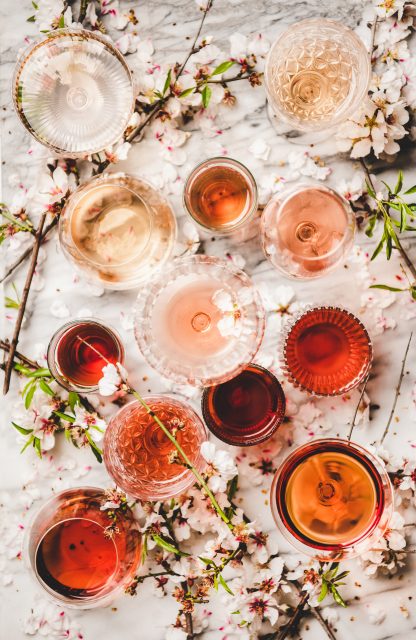
The following drops are all taken from this year’s Global Rosé Masters – the only UK-based wine competition that’s exclusively for rosé – which, importantly, sees all the samples tasted blind, with the judges aware of nothing more than the style (dry/off-dry/sweet or oaked/unoaked) and the price band when assessing the samples.
This means the Provençal rosés may be tasted alongside the pinks from Portugal or wherever they make wine in this colour, allowing for the new and less famous to shine, or the quality of the established to be confirmed.
Having already reported on the results in full from this year’s competition, it can be seen that certain trends are emerging in the rapidly-expanding rosé sector, and, while Provence still offers the ultimate expression of pale, dry pink wine, others areas are catching up, notably the rosés from other prime Mediterranean wine-growing areas such as parts of Greece and the Tuscan coast, as well as the Languedoc, where Gérard Bertand is the driving force, particularly at the top end.
Indeed, this man is fast-becoming a rival to Sacha Lichine in Provence, the figure behind Château d’Esclans, the source of Whispering Angel and the first luxury rosé: Garrus.
Bordeaux is also emerging as a place for fine rosé, but unlike the pink wines from southern France, which rely on Grenache and Mourvèdre as key grapes, this former, more northerly Atlantic-influenced region employs Merlot and Cabernet, the varieties of course authorised in the area for its reds.
And we should not forget the rosés of Spain and Portugal too, with some lovely expressions emerging from the latter country’s Douro wine region, while Chivite in Spain’s Navarra – a producer famous for the quality of its barrel-fermented Chardonnays – has turned its white winemaking skills to those of rosé, with wonderful oak-influenced results.
Outside the top 10 finest roses of 2021, there are a few other great wines to consider, and these can be read about here, taking in some further top pink drops from previous Global Rosé Masters: this is an annual competition.
Other producers worth also looking up when it comes to your luxury rosé needs are Château Brown of Bordeaux, Domaine Tempier of Bandol, and Chene Bleu of Ventoux.
And there’s a £100 newcomer to the luxury rosé sector called Etoile that uses grapes from two domaines featured below – Château Romassan and Clos Mireille – both of which are owned by long-standing top-end pink wine specialist, Domaine Ott.
For now, read on to see our top 10 for 2021, which comprises those rosés over £25 that gained the highest scores in the competition, and achieved a Gold medal or the ultimate accolade, that of Rosé Master.
10. Cesar A Sumeire
 Named in honour of French sculptor Cesar Baldaccini, who signed this cuvée as a mark of his fondness for the owners of Château Coussin, the Sumeire family, this Provençal rosé is an intensely-flavoured wine employing the estate’s oldest vines of Grenache and Syrah. It does not employ oak in the winemaking, but has plenty of depth from the low-yielding fruit used in its creation, while displaying layers of delicious characters, from peach and pear, before finishing with some fresh apple and a chalky-textured dryness to ensure your mouth waters, readying it for more.
Named in honour of French sculptor Cesar Baldaccini, who signed this cuvée as a mark of his fondness for the owners of Château Coussin, the Sumeire family, this Provençal rosé is an intensely-flavoured wine employing the estate’s oldest vines of Grenache and Syrah. It does not employ oak in the winemaking, but has plenty of depth from the low-yielding fruit used in its creation, while displaying layers of delicious characters, from peach and pear, before finishing with some fresh apple and a chalky-textured dryness to ensure your mouth waters, readying it for more.
Producer: Château Coussin
Region: Provence
Country: France
Vintage: 2020
Sugar content: dry (2 g/l)
Abv: 12.5%
Grape varieties: 50% Grenache / 50% Syrah
Closure: cork
Price: £30
Rosé Masters medal: Gold
9. Pla dels Àngels Rosé
 It should perhaps come as no surprise that old vine Grenache from one of Spain’s top terroirs, Priorat, should produce such delicious red-berry scented rosé. However, this wine is an oddity because the majority of Priorat’s grapes go into powerful, age-worthy reds. Thankfully, the area’s oldest producer, Scala Dei, chose to reserve some of its prized fruit to make this rosado, which is a remarkable find in the Provence-dominated world of top end pink wine. In terms of taste and style, it’s bone dry, silken in texture, and has all the juicy appeal of crushed strawberries with a dash of fresh nectarine.
It should perhaps come as no surprise that old vine Grenache from one of Spain’s top terroirs, Priorat, should produce such delicious red-berry scented rosé. However, this wine is an oddity because the majority of Priorat’s grapes go into powerful, age-worthy reds. Thankfully, the area’s oldest producer, Scala Dei, chose to reserve some of its prized fruit to make this rosado, which is a remarkable find in the Provence-dominated world of top end pink wine. In terms of taste and style, it’s bone dry, silken in texture, and has all the juicy appeal of crushed strawberries with a dash of fresh nectarine.
Producer: Scala Dei
Region: Priorat
Country: Spain
Vintage: 2020
Sugar content: dry (1.5 g/l)
Abv: 14.5%
Grape varieties: 100% Grenache
Closure: cork
Price: £20-30
Rosé Masters medal: Gold
8. Cirque des Grives
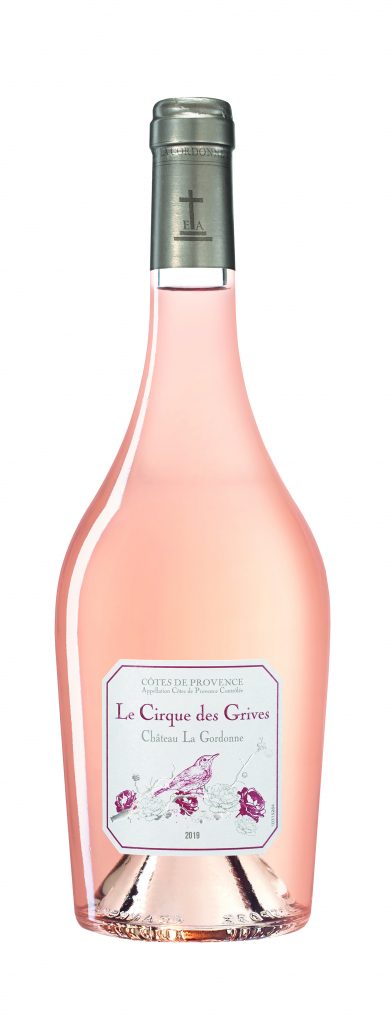 This top expression from Provence’s Château La Gordonne – which is owned by Champagne producer Vranken-Pommery – is an exciting discovery from this year’s Rosé Masters. Not previously tasted in the competition, it wowed in the 2021 tasting for its rich, creamy-textured mouthfeel, combined with refreshing citrus-zest characters, and beautifully ripe fruit flavours, from peach to pear and raspberry. There’s no influence from barrel ageing, but this is at the top of the game in the increasingly competitive world of unoaked, fine, dry, pale rosé.
This top expression from Provence’s Château La Gordonne – which is owned by Champagne producer Vranken-Pommery – is an exciting discovery from this year’s Rosé Masters. Not previously tasted in the competition, it wowed in the 2021 tasting for its rich, creamy-textured mouthfeel, combined with refreshing citrus-zest characters, and beautifully ripe fruit flavours, from peach to pear and raspberry. There’s no influence from barrel ageing, but this is at the top of the game in the increasingly competitive world of unoaked, fine, dry, pale rosé.
Producer: Château La Gordonne
Region: Provence
Country: France
Vintage: 2019
Sugar content: dry
Abv: 13.5%
Grape varieties: Grenache 50%, Syrah 20%, Cinsault 20%, Rolle 10%
Closure: cork
Price: £60
Rosé Masters medal: Master
7. Château Romassan
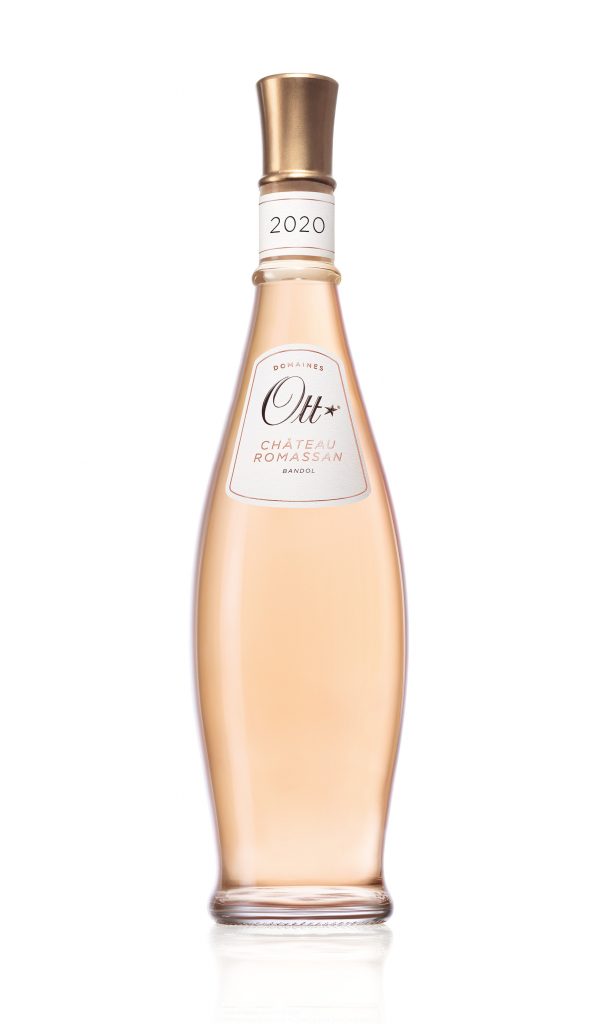 Hailing from the Bandol-based estate of Domaines Ott, the rosés of Château Romassan differ from this producer’s other Provençal properties: Clos Mireille and Château de Selle. That’s because the pinks from Romassan are Mourvèdre-dominant, and rest for eight months in old oak casks, while the rosés from Ott’s other two terroirs use more Grenache in the blend, and are made entirely in stainless steel vats. Because the wooden vessels at Romassan are large and made with old wooden staves, this rosé doesn’t have any obvious oak-sourced flavours, but does have a gently oily texture, giving it an appealing fatness in the mouth; there’s even a touch of cream and smoke, along with the usual peach, wild strawberry and white cherry characters one expects of fine southern French rosé, as well as a gentle but fresh acidity.
Hailing from the Bandol-based estate of Domaines Ott, the rosés of Château Romassan differ from this producer’s other Provençal properties: Clos Mireille and Château de Selle. That’s because the pinks from Romassan are Mourvèdre-dominant, and rest for eight months in old oak casks, while the rosés from Ott’s other two terroirs use more Grenache in the blend, and are made entirely in stainless steel vats. Because the wooden vessels at Romassan are large and made with old wooden staves, this rosé doesn’t have any obvious oak-sourced flavours, but does have a gently oily texture, giving it an appealing fatness in the mouth; there’s even a touch of cream and smoke, along with the usual peach, wild strawberry and white cherry characters one expects of fine southern French rosé, as well as a gentle but fresh acidity.
Producer: Domaines Ott
Country: France
Region: Bandol
ABV: 12.5%
Grape Variety: 60% Mourvedre, 20% Cinsault, 20% Grenache
Vintage: 2020
Price: £40
Residual sugar level: Less than 1 g/l
Closure type: Natural cork
Medal: Gold
6. Léoube La Londe
 Like all the wines from Château Léoube, this rosé is pale, fine, and organic, but, hailing from the Côtes de Provence cru of La Londe, which faces the sea, it seems to have a touch more intensity than others in the range. It’s also the priciest pink wine from Léoube, no doubt a reflection of its quality level in the producer’s eyes. It’s a textbook Provençal rosé with soft ripe fruit and a bone-dry finish, with layers of flavour from fresh peach to redcurrant, ripe pear to pink grapefruit, while leaving behind a refreshing, fine chalky texture textural sensation.
Like all the wines from Château Léoube, this rosé is pale, fine, and organic, but, hailing from the Côtes de Provence cru of La Londe, which faces the sea, it seems to have a touch more intensity than others in the range. It’s also the priciest pink wine from Léoube, no doubt a reflection of its quality level in the producer’s eyes. It’s a textbook Provençal rosé with soft ripe fruit and a bone-dry finish, with layers of flavour from fresh peach to redcurrant, ripe pear to pink grapefruit, while leaving behind a refreshing, fine chalky texture textural sensation.
Producer: Château Léoube
Country: France
Region: Cotes de Provence La Londe
Still/ sparkling: Still
Vintage: 2020
Grape variety: Grenache 70%, Cinsault 30%
Oaked/ unoaked: Unoaked
Sugar: <1g/l
Price: £40
Medal: Gold
5. Clos Mireille
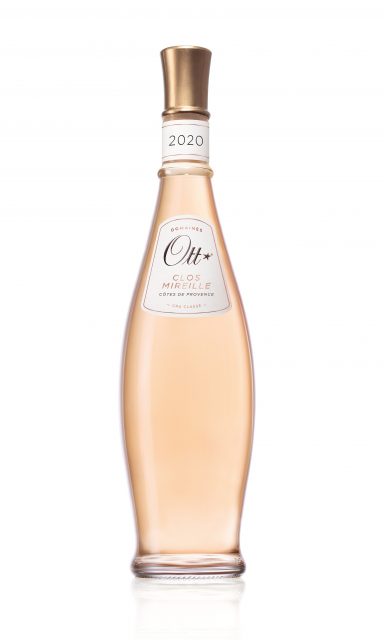 A pioneer in top-end, beautifully-packaged, expertly-crafted Provençal pale pink wine, Domaines Ott is still at the top of the game with this classic and delicious expression. Loaded with peach and pink grapefruit flavours, and a wonderful texture that starts with fresh fruit, moves into a riper, oilier feeling, and finishes with a soft but dry chalky sensation, this is a very fine glass of wine. Indeed, judging by it’s performance over the years in the Global Rosé Masters, this is the ultimate expression of dry, unoaked rosé.
A pioneer in top-end, beautifully-packaged, expertly-crafted Provençal pale pink wine, Domaines Ott is still at the top of the game with this classic and delicious expression. Loaded with peach and pink grapefruit flavours, and a wonderful texture that starts with fresh fruit, moves into a riper, oilier feeling, and finishes with a soft but dry chalky sensation, this is a very fine glass of wine. Indeed, judging by it’s performance over the years in the Global Rosé Masters, this is the ultimate expression of dry, unoaked rosé.
Producer: Domaines Ott
Country: France
Region: Côtes de Provence
Grape variety: Grenache 69%, Cinsault 24%, Rolle 5% and Syrah 2%
Vintage: 2020
Residual sugar level: <0.5
Closure type: Natural cork
Colour: Pale salmon pink
Medal: Master in the Global Rosé Masters 2020
Price: £30-£50
4. Château la Sauvageonne La Villa Rosé
 Aside from the delicate salmon pink appearance of the wine itself, there’s nothing subtle about the La Villa Rosé from Château la Sauvageonne. For a start, it comes in a heavy bottle with the deepest punt of any still pink wine I can think of. Then there’s the taste, which is hardly understated, with flavours ranging from vanilla-cream to freshly-toasted bread, and ripe pear and juicy peach to crushed strawberry. Plus, it’s hardly low when it comes to the ABV. But the wine is so deliciously indulgent, and fear not, refreshing too, that it’s such a complete rosé, and versatile glass of wine, that it could suit any occasion or food type. However, a word of warning: despite it’s strong personality, this rosé tip-toes down the throat so softly, you barely sense you’re drinking it.
Aside from the delicate salmon pink appearance of the wine itself, there’s nothing subtle about the La Villa Rosé from Château la Sauvageonne. For a start, it comes in a heavy bottle with the deepest punt of any still pink wine I can think of. Then there’s the taste, which is hardly understated, with flavours ranging from vanilla-cream to freshly-toasted bread, and ripe pear and juicy peach to crushed strawberry. Plus, it’s hardly low when it comes to the ABV. But the wine is so deliciously indulgent, and fear not, refreshing too, that it’s such a complete rosé, and versatile glass of wine, that it could suit any occasion or food type. However, a word of warning: despite it’s strong personality, this rosé tip-toes down the throat so softly, you barely sense you’re drinking it.
Producer: Gérard Bertrand
Country: France
Region: Languedoc-Roussillon
ABV: 14.5%
Grape Variety: Cinsault 40%, Grenache 30%, Syrah 20%, Mourvèdre 10%
Vintage: 2020
Price: £60
Residual sugar level: 1 g/l
Closure type: Natural cork
Medal: Master
3. Les Clans
 If you love barrel-influenced white wines such as fine Burgundy, or the great blancs of Graves in Bordeaux, then Les Clans should not disappoint. Loaded with flavours from vanilla cream to peach, pear and wild strawberry fruits, and a touch of blood orange and bitter almond, even a bit of gently tannic grip, this is a rosé that has the hallmarks of a top-end white wine, mixed with some of the characters of a fine, light red.
If you love barrel-influenced white wines such as fine Burgundy, or the great blancs of Graves in Bordeaux, then Les Clans should not disappoint. Loaded with flavours from vanilla cream to peach, pear and wild strawberry fruits, and a touch of blood orange and bitter almond, even a bit of gently tannic grip, this is a rosé that has the hallmarks of a top-end white wine, mixed with some of the characters of a fine, light red.
Producer: Château d’Esclans
Country: France
Region: Provence
ABV: 14%
Grape Variety: 73% Grenache, 27% Vermentino
Vintage: 2019
Price: £50
Residual sugar level: Less than 1 g/l
Closure type: Natural cork
Medal: Master
2. Clos du Temple
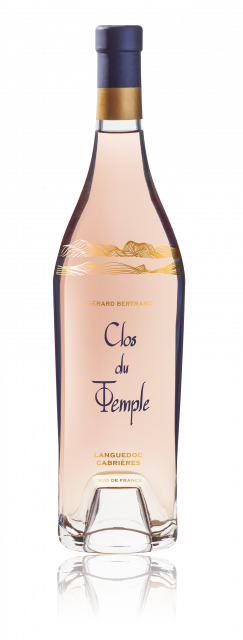 With a retail price of nearly £200, this is the world’s most expensive still rosé. And, notably, it’s not from Provence, but the biodynamically-farmed vineyards of Gérard Bertrand in the Languedoc. As for the taste, this barely pink rosé belies a powerfully-flavoured, persistent and layered drink, with plenty of barrique-sourced characters from toast to vanilla pod, complemented by masses of juicy fruit from peach, ripe pear and wild strawberry, and an appealing orange zest lift too.
With a retail price of nearly £200, this is the world’s most expensive still rosé. And, notably, it’s not from Provence, but the biodynamically-farmed vineyards of Gérard Bertrand in the Languedoc. As for the taste, this barely pink rosé belies a powerfully-flavoured, persistent and layered drink, with plenty of barrique-sourced characters from toast to vanilla pod, complemented by masses of juicy fruit from peach, ripe pear and wild strawberry, and an appealing orange zest lift too.
Producer: Gérard Bertrand
Country: France
Region: Languedoc-Roussillon
ABV: 14.5%
Grape Variety: 30% Grenache, 20% Cinsault, 20% Syrah, 20% Mourvèdre, 30% Viognier
Vintage: 2020
Price: £200+
Residual sugar level: less then 1 g/l
Closure type: Natural cork
Medal: Master
1. Garrus
 Producer: Château d’Esclans
Producer: Château d’Esclans
Country: France
Region: Provence
ABV: 14%
Grape Variety: 96% Grenache, 3% Vermentino, 1% Tibouren
Vintage: 2019
Price: £120
Residual sugar level: Less than 1 g/l
Closure type: Natural cork
Colour: Very pale salmon pink
Medal: Master
Judging by this year’s Global Rosé Masters, the pink wine that kicked-off the luxury rosé trend, Garrus, is still at the forefront, despite being surrounded by a raft of imitators more than 10 years since it was launched.
Garrus was the pioneer of barrel-fermented, high-priced rosé – and has helped encourage wine lovers to reassess rosé’s as purely a fun, short-lived summer drink.
Launched in 2007, Garrus was a delicious surprise for the wine world back then. But what does it taste like today? Well, it’s still delicious, just less of a stylistic shock. While it may be only just pink, it carries all the appealing traits of great Provençal rosé, from peach to red berries, white cherries and orange blossom, along with the creamy, vanilla characters from fine French oak used in the winemaking. Textured, full-flavoured, but also fine and refreshing, this must be the world’s most versatile dry rosé, and, having tasted blind the recent vintages of Garrus, this 2019 is the best expression yet.
Finally, while it’s wonderful to drink now, Garrus is also a wine that can be cellared to gain complexity with time. So, if you order a case, you might want to put aside a few bottles, and see what a great rosé tastes like after a few years maturing in bottle. It will taste different, but it won’t be a disappointment. Rather, it should be a pleasant revelation.
About the competition
The Global Rosé Masters is a competition created and run by the drinks business, and forms part of its successful Masters series for noble grape varieties, such as Chardonnay and Pinot Noir; major wine styles, from sparkling to fortified; and famous regions including Rioja, Champagne and Tuscany. The competition is exclusively for rosé. The top wines were awarded Gold, Silver or Bronze medals according to their result, and those expressions that stood out as being outstanding in their field received the ultimate accolade – the title of Rosé Master.
Please visit The Global Masters website for more information, or, to enter future competitions – giving you the chance to feature online and in print – please call: +44 (0) 20 7803 2420 or email Sophie Raichura at: sophie@thedrinksbusiness.com

